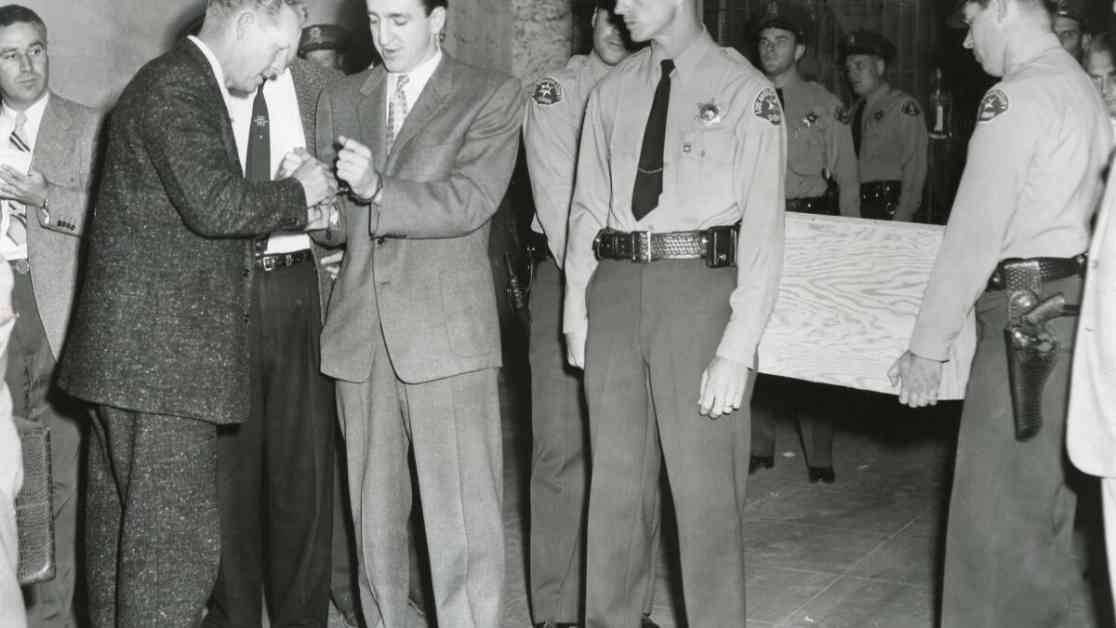The Red Light Bandit: A Case of Infamy and Intrigue in Postwar California
In the annals of American criminal history, few figures have captured the public imagination quite like Caryl Chessman, the notorious Red Light Bandit. His reign of terror in the late 1940s terrorized lovers’ lanes in California, leaving a trail of fear and violence in his wake. Chessman’s story is one of defiance, intrigue, and ultimately, tragedy.
The Rise of the Red Light Bandit
Born in Michigan and raised in Glendale by devout Baptists, Chessman’s early life was marked by hardship and struggle. His father’s failed business ventures plunged the family into poverty, exposing Chessman to the harsh realities of life at a young age. It was in this crucible of adversity that Chessman’s criminal tendencies began to take root.
A self-described “grinning, brooding young criminal psychopath,” Chessman reveled in the thrill of breaking the law. Arrested for theft on his 17th birthday, he quickly developed a reputation as a cunning and audacious criminal. His long criminal record was a testament to his skill at evading capture, but his luck would eventually run out.
The Reign of Terror
In late January 1948, the Red Light Bandit struck fear into the hearts of Californians as he prowled the darkened streets of Malibu and Laurel Canyon. Armed with a police-style flashing light to deceive his victims, Chessman robbed couples at gunpoint, leaving a trail of terror in his wake.
During one particularly brutal attack, Chessman forced a woman to perform oral sex at gunpoint, a crime that would lead to his eventual downfall. Two nights later, he abducted a 17-year-old girl, subjecting her to hours of torment before demanding the same degrading act. It was these heinous crimes that would ultimately seal Chessman’s fate.
The Trial and Conviction
After a high-speed chase, Chessman was apprehended by police and brought to trial for his crimes. Despite his claims of innocence, the evidence against him was overwhelming. The sexual assault victims identified him as their attacker, and Chessman’s own arrogance and hunger for the spotlight only served to incriminate him further.
Convicted on 17 counts for his month-long crime spree, Chessman was sentenced to death at the age of 26. His 12-year legal battle to avoid execution captured the attention of the world, as did his prison writings. His memoir, “Cell 2455, Death Row: A Condemned Man’s Own Story,” became a bestseller, shedding light on the mind of a man condemned to die.
The Battle for Clemency
As Chessman languished on death row, a groundswell of support grew around him. Eleanor Roosevelt, Ray Bradbury, and Aldous Huxley all lent their voices to the chorus of pleas for clemency. Petitions poured in from around the world, urging California Governor Edmund “Pat” Brown to spare Chessman’s life.
Despite his personal belief in Chessman’s guilt, Governor Brown grappled with the moral implications of the death penalty. His refusal to grant clemency in 1959 sparked outrage among Chessman’s supporters, who saw the condemned man as a symbol of redemption and rehabilitation.
The Final Hours
As the date of Chessman’s execution drew near, tensions reached a fever pitch. The U.S. State Department warned Governor Brown that the prisoner’s death could spark protests during an upcoming diplomatic trip, while anti-Chessman crowds burned effigies of the governor in the streets.
In a last-ditch effort to save Chessman’s life, Governor Brown ordered a reprieve, but his attempts at a death penalty moratorium were rebuffed. The final hours leading up to Chessman’s execution were marked by confusion and chaos, culminating in a tragic miscommunication that sealed the condemned man’s fate.
Legacy and Controversy
In death, Chessman’s legacy endured, haunting Governor Brown’s political career for years to come. The case of the Red Light Bandit became a rallying cry for opponents of the death penalty, spurring calls for reform and reflection on the capricious nature of justice.
Chessman’s final words, expressing hope that his fate would contribute to the end of capital punishment, remain a poignant reminder of the enduring impact of his life and death. His story serves as a cautionary tale of the consequences of unchecked power and the complexities of justice in a society grappling with its own demons.
As we look back on the case of Caryl Chessman, the Red Light Bandit, we are reminded of the enduring power of a single individual to captivate the public imagination and challenge the moral fabric of a nation. Chessman’s story may have faded from memory, but its lessons remain as relevant today as they were in the turbulent days of postwar California.



























